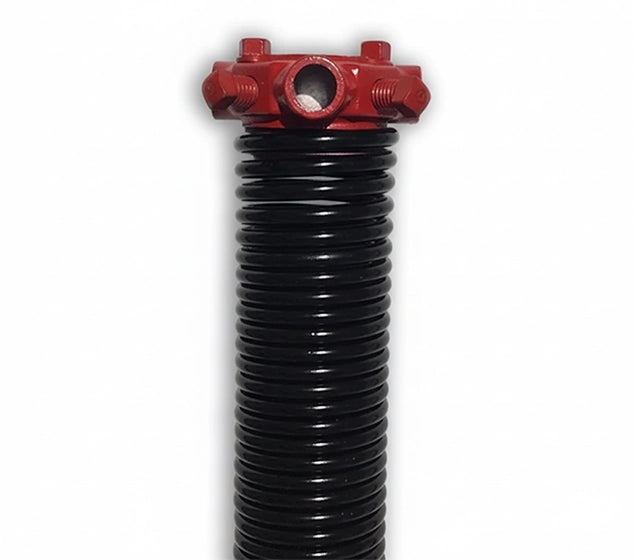
Explore Our Unique Collections

Carriage Style Garage Doors
Shop Now
Contemporary Steel Doors
Shop Now
Garage Door Motors
Shop Now
Garage Door Torsion Springs
Shop Now
Modern Aluminum Doors
Shop NowOptionize Add-ons
Shop Now
Products
Shop Now
Raised Panel Garage Doors
Shop Now
Woodlike Doors
Shop Now
Carriage Style Garage Doors
Shop Now
Contemporary Steel Doors
Shop Now
Garage Door Motors
Shop Now
Garage Door Torsion Springs
Shop Now
Modern Aluminum Doors
Shop NowOptionize Add-ons
Shop Now
Products
Shop Now
Raised Panel Garage Doors
Shop Now
Woodlike Doors
Shop NowFrequently Asked Questions
What is the primary function of a Garage Door Torsion Spring?
The spring's main job is to counteract and balance the massive weight of the garage door itself, making it easy to open and close.
- Garage Door Torsion Spring - The spring stores mechanical energy when the door is closed (wound tight) and releases that energy when the door is opened (unwound), effectively reducing the 300+ pound door weight to just 10-20 pounds of effort for the opener or human.
Why is the size and gauge of the torsion spring so critical?
The spring must be precisely sized and measured to perfectly balance the door's exact weight and height.
- Garage Door Torsion Spring - Using the wrong size spring will cause the motor to strain, leading to premature opener failure. More critically, an incorrectly sized spring can cause the door to fall quickly or not stay open, creating a severe safety hazard.
What is the average lifespan of a standard torsion spring?
Springs are rated by "cycles," and their lifespan is measured by the number of times the door opens and closes.
- Garage Door Torsion Spring - A standard residential spring is rated for approximately 10,000 cycles. For an average family (4 cycles per day), this equates to about 7 years of use. Higher-grade, "high-cycle" springs (25,000+ cycles) are available for heavier doors or high-traffic garages.
What are the common signs that a torsion spring is broken?
A broken spring is typically a sudden and dramatic failure that is easy to identify.
- Garage Door Torsion Spring - The most obvious sign is a loud, sharp "bang" or snap coming from the garage. Visually, you will see a gap of 1–2 inches in the middle of the spring coil. When you try to open the door, it will feel extremely heavy or the opener will struggle and stop immediately.
Is it safe to replace a broken torsion spring myself?
Due to the massive tension stored in the coils, replacing a spring is extremely dangerous and should only be handled by a professional.
- Garage Door Torsion Spring - No, it is not safe. Torsion springs are wound under hundreds of pounds of torque. Releasing or winding this tension requires specialized tools (winding bars) and training. Attempting DIY repair can cause severe injury or even death.
What is the difference between an oil-tempered spring and a galvanized spring?
This refers to the coating and material treatment applied to the spring wire.
- Garage Door Torsion Spring - Oil-tempered springs are standard and coated with oil to prevent rust. Galvanized springs are coated with zinc, which offers superior resistance to rust, making them ideal for humid or coastal environments.
Where exactly is the torsion spring located on the garage door system?
The spring assembly is mounted directly above the center of the door opening.
- Garage Door Torsion Spring - It is mounted horizontally on a steel shaft (the torsion tube) running parallel to the top of the door. The spring is secured to the tube by a stationary cone and connects to cables that run down to the bottom brackets of the door.
What does "Right Hand Wound" vs. "Left Hand Wound" mean?
This is a key technical detail required when ordering a replacement spring.
- Garage Door Torsion Spring - The winding direction refers to how the wire is coiled. This is essential for correct installation. You determine the hand-wind by looking at the stationary cone on the spring's center—the wire should run up and away from the cone in the same direction.
How do I properly measure a torsion spring to ensure I order the correct replacement?
Accurate measurement is critical and requires four precise metrics.
- Garage Door Torsion Spring - The four measurements needed are: 1) Wire size (diameter of the wire itself), 2) Inside diameter of the spring, 3) Length of the spring (in inches), and 4) The overall height and width of the door the spring services.
What can be done to maintain a torsion spring to prolong its life?
Proper lubrication can help protect the spring from rust and friction, extending its cycle life.
- Garage Door Torsion Spring - It is recommended to spray a silicon-based or lithium-based lubricant directly onto the coils of the spring once or twice a year. This keeps the coils from binding up and protects the metal from oxidation, ensuring smooth operation.

